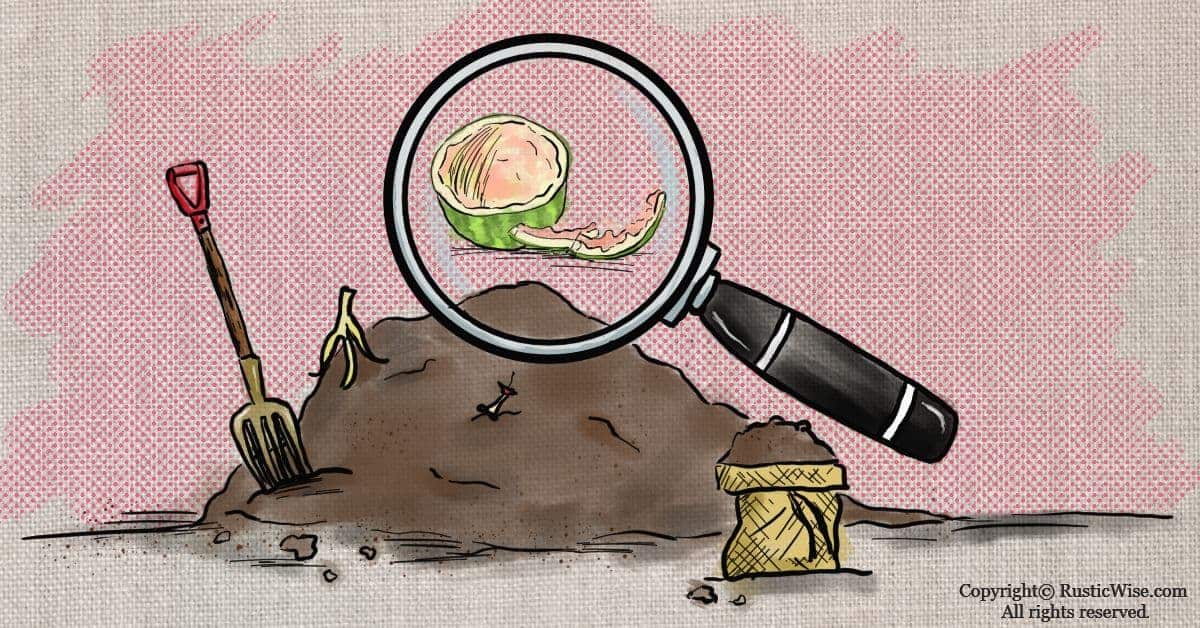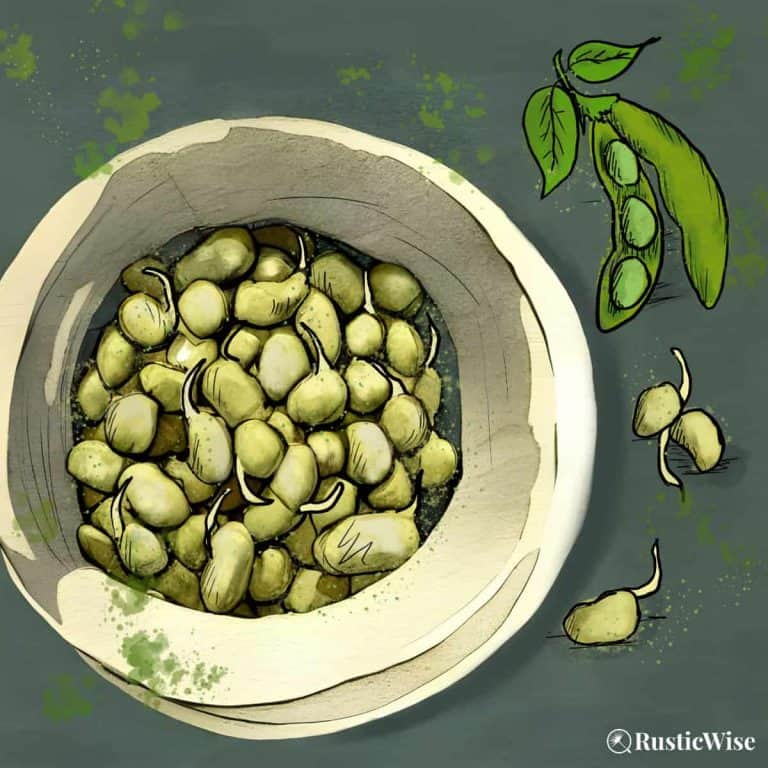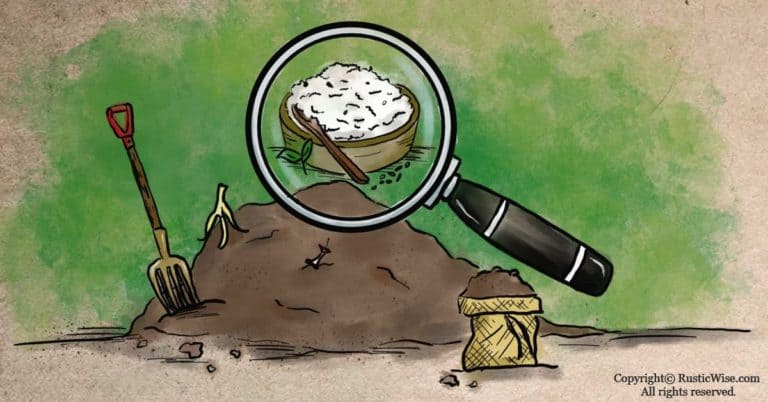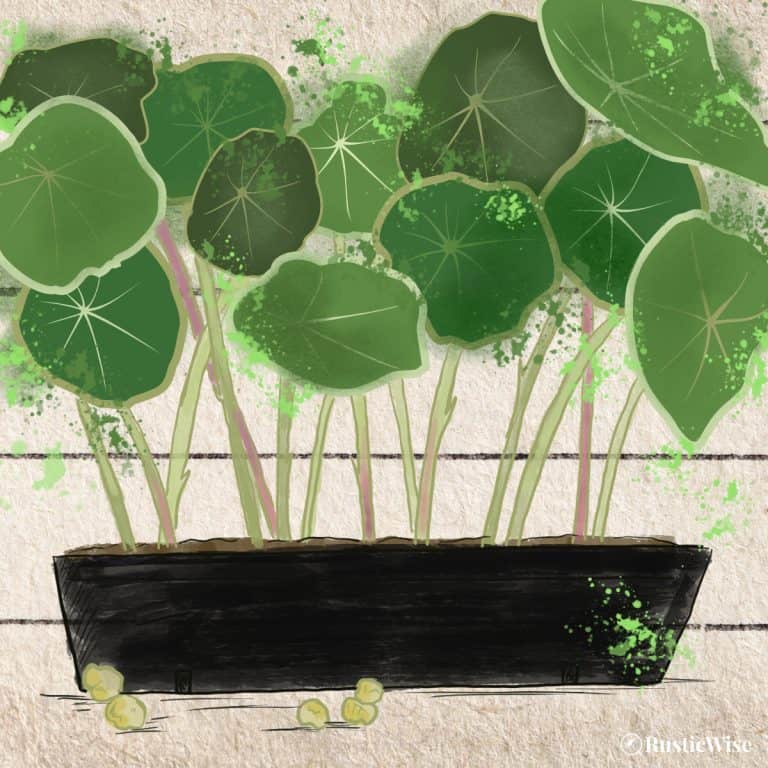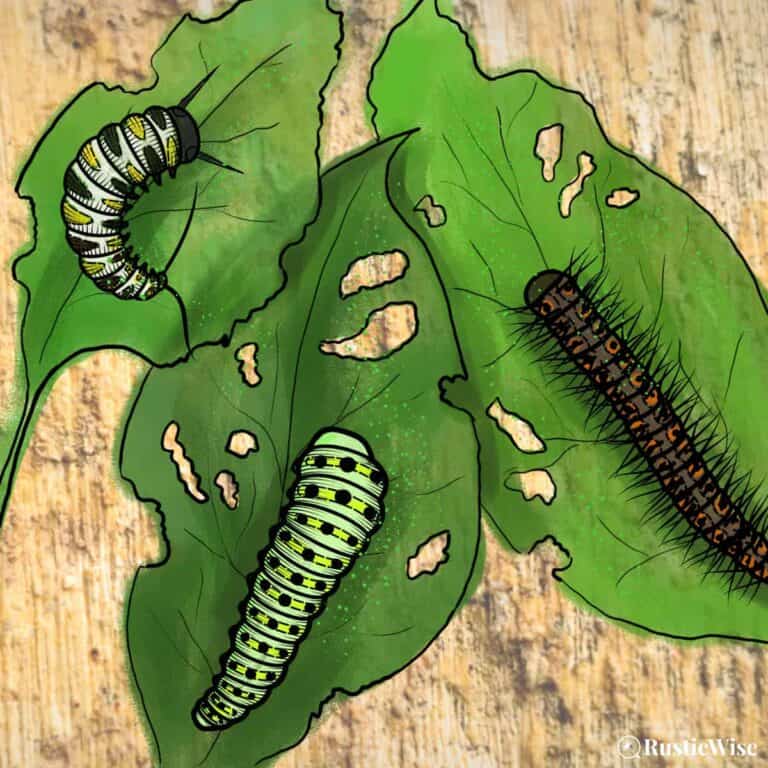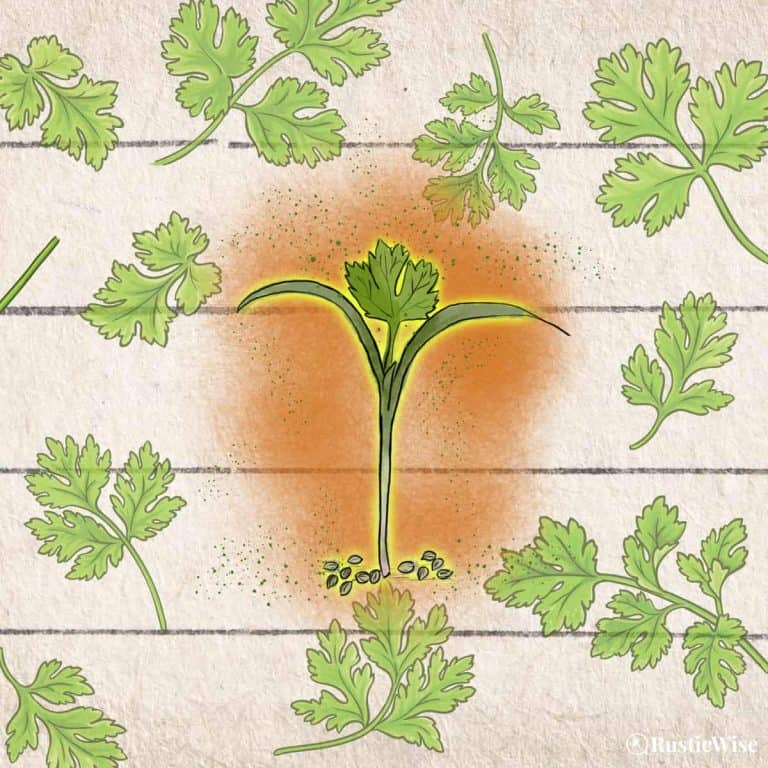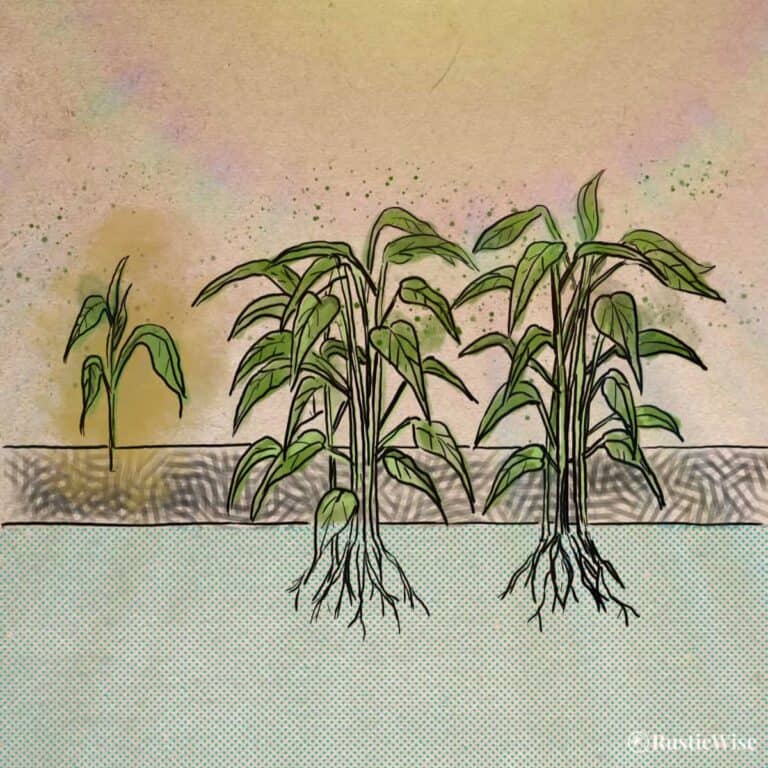Can You Compost Watermelon Rind? Yes, Here’s the Best Way
Sweet and refreshing, watermelon is a summertime staple. After you’ve devoured the pink fruit, can you compost watermelon rind? The short answer is yes, but if you want to do it correctly, there are a few things to know. Watermelon rind is tough and can take a long time to break down in a compost, so it’s best to chop into smaller chunks first. If you have a vermicompost, you’ll be happy to know that red wigglers love rinds too—help them break it down faster by cutting into bite-sized pieces.
While most people only eat the pink flesh, watermelon rinds are also edible. However, if you don’t feel like chewing into the rind, composting is a great way to divert food waste away from landfills. (Watermelon rinds are rather large, and would take up a lot of space in your trash can, anyway.)
Read on to learn more about composting watermelon rind.
Why compost watermelon rind?
The U.S. Environmental Protection Agency (EPA) estimates that kitchen scraps and yard waste comprise over 30 percent of the garbage tossed out. Not only does this contribute to the production of harmful methane gas, it’s also a waste of nutrient-rich ingredients that could be added to a home compost!
Whether you have a large garden, or a few small potted plants, your shrubs, trees, flowers, vegetables, and houseplants would all benefit from homemade compost.
Briefly put, composting involves collecting food waste, yard clippings, and other organic materials to create humus, or finished compost—a nutrient-rich soil amendment. The decomposition process takes place with the help of microorganisms, bacteria, fungi, worms, and other small insects.
You can then add your finished compost to improve your soil structure, improve aeration, moisture-retention, and drainage.
If you’re new to composting, check out our article on Helpful Tips for Starting Your Own Compost Pile.
And if compost sounds awfully similar to mulch, read What’s the Difference Between Compost and Mulch?
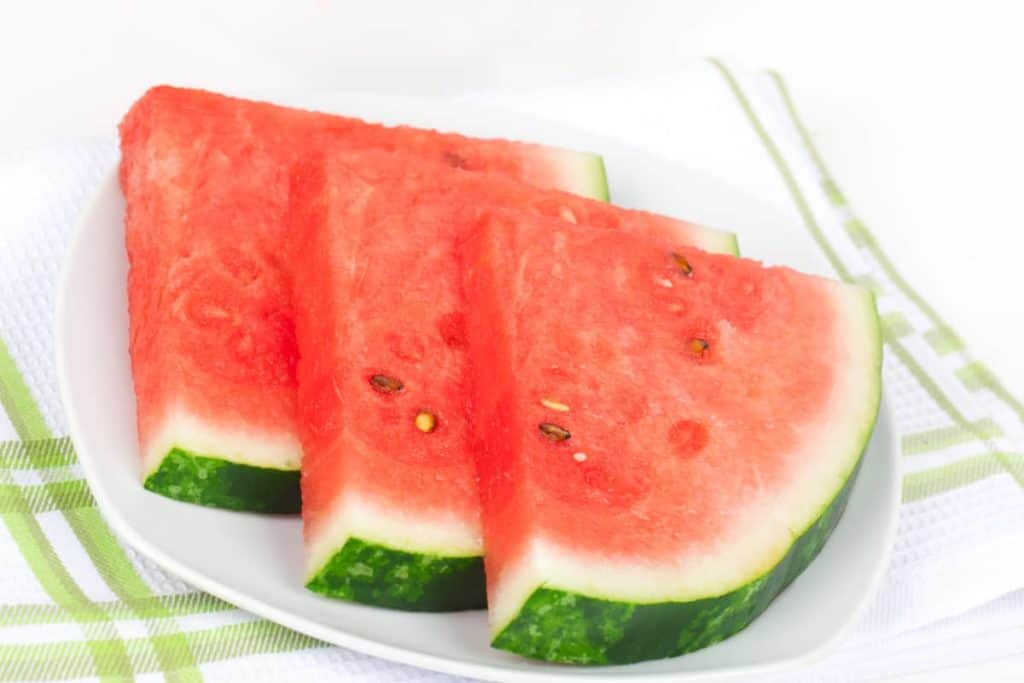
Anatomy of a watermelon
Here’s a quick look at the different parts that make up watermelon:
Is watermelon rind a “green” or “brown” compost material?
In composting terms, watermelon would be a “green” compost ingredient, like most kitchen scraps. It provides a boost of nitrogen to a compost pile which provides nutrients to microorganisms to enable them to multiply and grow. Watermelon rind also adds moisture and other nutrients.
To balance green, nitrogen-rich materials, “brown” compost materials are required to provide a shot of carbon. Carbon works to provide a steady source of slow-release energy to sustain microorganisms in a compost pile. Examples of brown compost ingredients are newspaper, shredded cardboard, dry leaves, and twigs.
A successful compost heap requires a balanced diet of approximately half green components and half brown components, along with moisture, and oxygen (2).
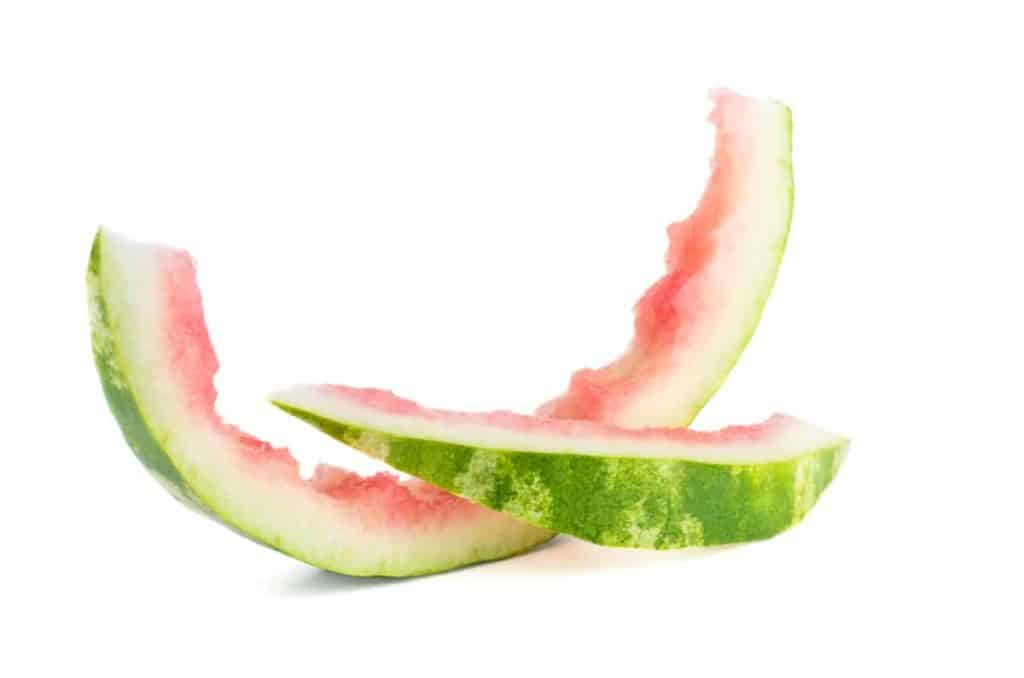
Tips on composting watermelon rind
Do you have watermelon rinds piling up in your kitchen? You can compost them! Composting is an excellent way to create rich soil, which can be used to grow healthy plants.
Cut up your watermelon scraps into smaller pieces before adding it to your compost bin or worm farm. This will help speed up the process of breaking down the fruit’s tough outer layer and allow for better decomposition by increasing the surface area.
When composting watermelon rinds, it’s best not to just toss them on top of other food scraps as this attract pests and backyard critters.
Here’s how you do it:
- Chop the watermelon rind into small pieces about several inches long, and layer with other fruit or vegetable scraps in a compost bin.
- Cover the mixture with a thin layer of “brown” compost ingredients such as shredded newspaper, cardboard, or dry leaves. This will also absorb any excess moisture.
Can you compost watermelon seeds?
This depends on whether you have a hot compost pile, as well as your tolerance for “surprise” plants. Only hot compost piles can effectively kill most seeds. So, if you do have a hot, thriving compost, then feel free to throw in watermelon seeds. Most backyard basic compost bins don’t ever get hot enough to kill seeds, though.
If you have a cold compost pile, chances are that the seeds may survive and even sprout new plants when you spread the finished compost around the garden. This isn’t really a big deal however—you can easily pull out any unwanted seedlings.
So, if you accidentally threw in a few watermelon seeds and if you really don’t want any unexpected watermelon seedlings to take root, you could allow your compost to sit (and further decompose) for another few months.
How to add watermelon rind to a worm bin
Like other large pieces of food that you add to a vermicompost, it’s best to cut up watermelon rind into small pieces before letting your red wigglers go at it (the smaller the better).
Since watermelon rind is tougher than, say carrot peels for example, your wiggly friends will take longer to decompose them. Red wigglers seem to really love melon rinds—they may disappear quicker than you expected!
Remember to add only what they can reasonably eat in two or three days to avoid creating a slimy mess.
Red wigglers love all types of melon rind from cantaloupe to honeydew. So feel free to throw those into your worm bin as well.
Can you eat watermelon rind?
Yes, watermelon rind is edible. So, instead of composting the rinds, you can eat them instead. A popular way to eat watermelon rinds is to pickle them first! This is actually a surprisingly tasty way to eat watermelon rind, and it really stretches the amount of food you get from the fruit. Once we eat the fleshy part, we pickle the rinds and can usually get three or four quarts of food!
What’s watermelon rind made of?
The rind contains an amino acid called citrulline which has been shown to have a variety of health benefits:
- Promote healthy blood vessels, and deliver oxygen to the body thereby boosting athletic performance.
- May also provide a boost to your libido as one study shows.
- May lower blood pressure
Besides citrulline, watermelon rind is also a rich source of fiber, which we know is the key to keeping us regular.
The final word: can you compost watermelon rind?
Yes, you can compost watermelon rind. Just cut them into smaller pieces to speed up the composting process. Can you feed watermelon rinds to a worm bin? You can! Worms love watermelon rinds and will eat them up in no time at all. You’ll have healthy and happy worms, and richer compost too.
Related questions
Can you grow watermelon in compost?
If you’ve accidentally added a few watermelon seeds, you may be wondering if a watermelon plant can sprout in your compost. The answer is, not likely. While compost is a rich source of nutrients, using it alone (without amending it with regular soil) may prove to be too nutrient-rich. Plants need a proper balance of nutrients such as nitrogen, phosphorous, and potassium, and compost alone doesn’t create a favorable growing environment.
How long can cut watermelon last in the fridge?
Generally cut watermelon is at its best when eaten within three or four days. If you’re lucky, you may be able to stretch this to a week, but some of the nutrients, texture, and flavor will be gone. If you have too much watermelon on your hands, try freezing it, or making watermelon popsicles.

References
- United States Environmental Protection Agency (EPA), Composting At Home, https://www.epa.gov/recycle/composting-home. Accessed June 2021.
- Foster, Clare (2014). Compost: How to make and use organic compost to transform your garden. Mitchell Beazley. ISBN 978-1-84533-895-4.
- Uncle Jim’s Worm Farm, 10 Fruits Worms Love To Eat, https://unclejimswormfarm.com/10-fruits-worms-love-to-eat/. Accessed June 2021.
- Krans, Brian (17 April 2020), “4 Watermelon Rind Benefits,” Healthline. https://www.healthline.com/health/food-nutrition/watermelon-rind-benefits. Accessed June 2021.

Author: Theresa Tesolin
Theresa is co-founder of RusticWise. She helps people unleash their inner DIY spirit by encouraging them to get dirty and make or grow something from scratch.

